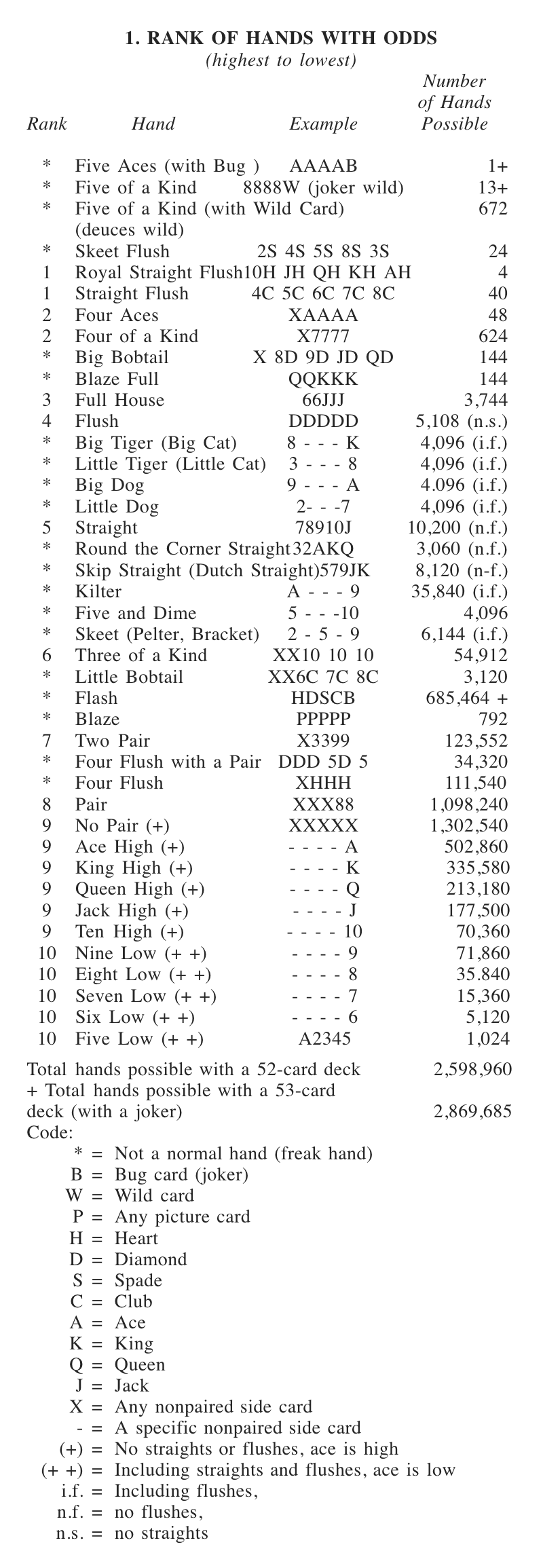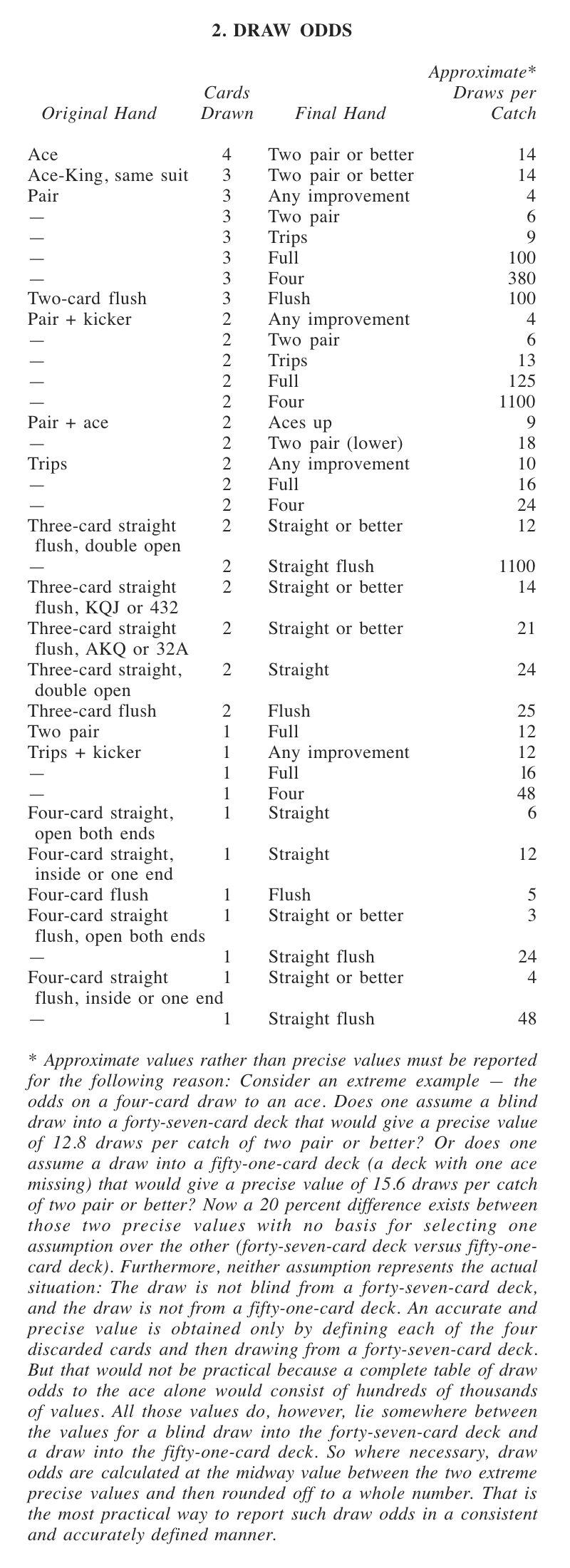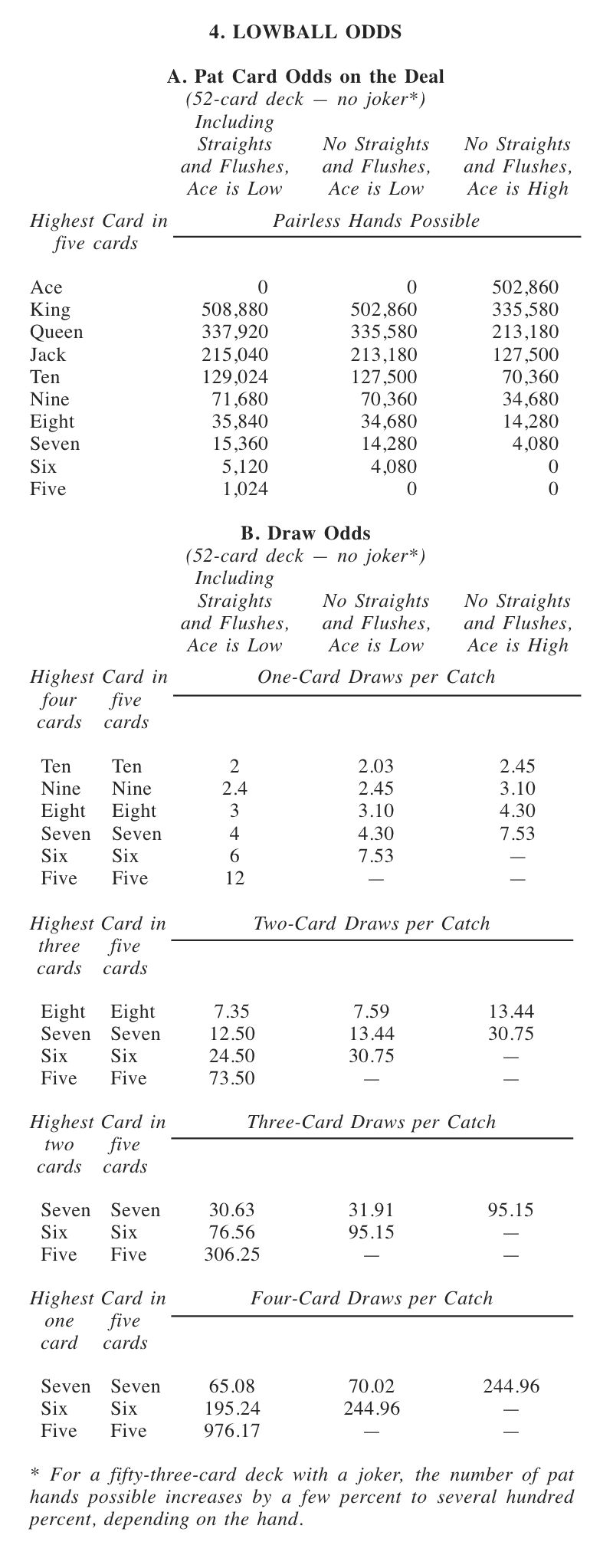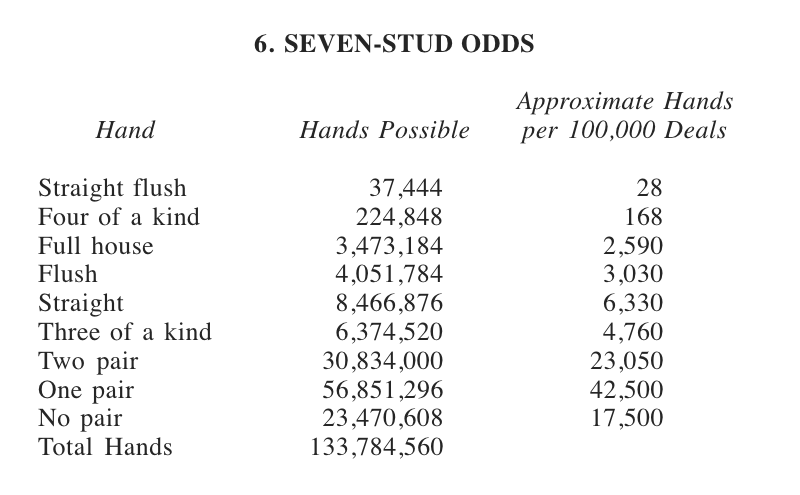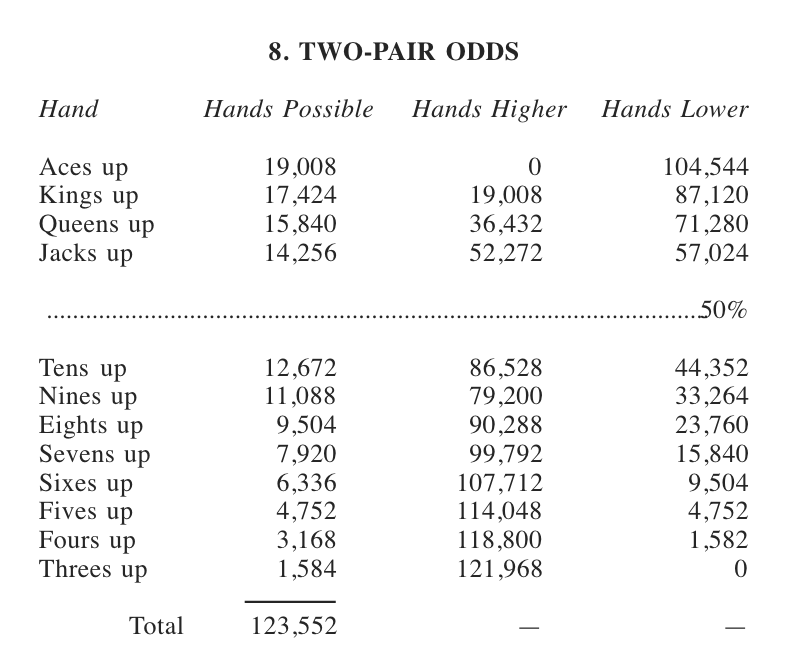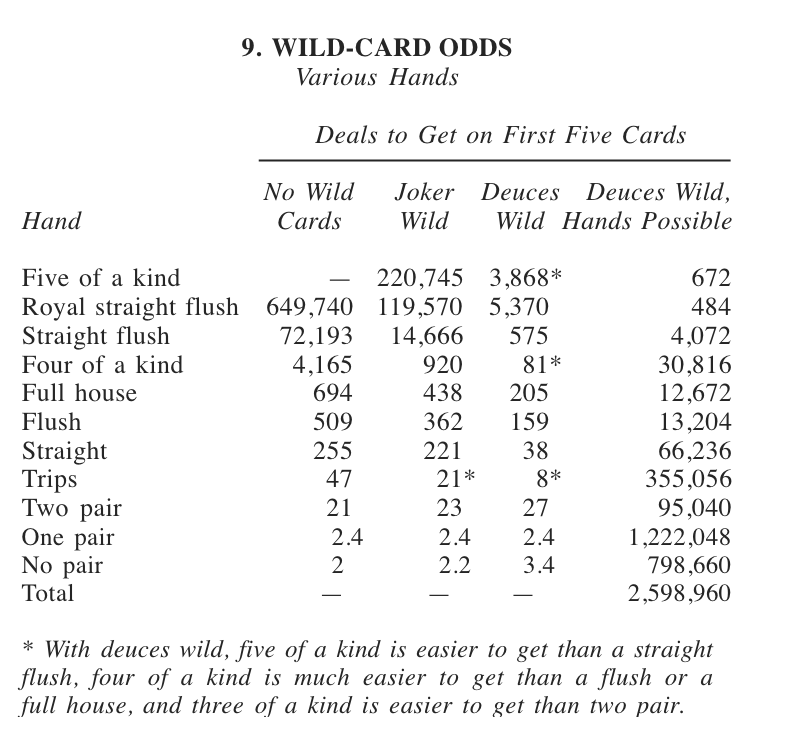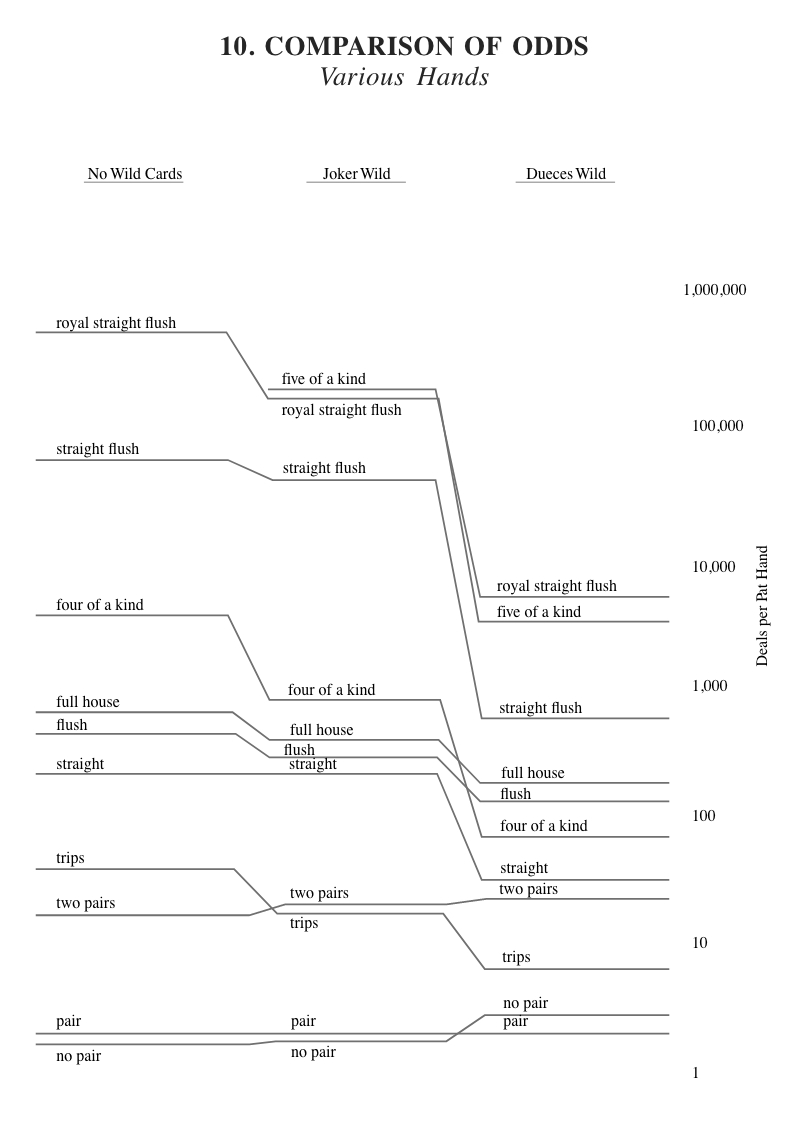Poker Odds
Appendix D compiles the following card odds:
- Rank of Hands with Odds
- Draw Odds
- Pat-Hand Odds
- Lowball Odds
- Hold ‘em and Stud Odds
- Seven-Stud Odds
- Seven-Stud Catch Odds
- Two-Pair Odds
- Wild-Card Odds
- Comparison of Odds.
Card odds can be calculated and expressed as shown below.
To calculate, for example, the number of three-of-a-kind hands possible on the deal, simply divide the deals per pat hand (47) into the total number of hands possible with a 52-card deck (2,598,960). That calculation gives a rounded-off answer of 55,300 possible hands of three of a kind on the deal. The precise answer (as shown in odds table #1 is 54,913 possible hands, which is calculated by using exact figures and not rounding off numbers.

But in calculating the card odds for drawing various poker hands (such as tabulated in odds table #2), a special problem arises that makes draw odds reported in all other poker books either inaccurate or imprecise. Furthermore, no practical way exists to give precise draw odds for certain hands. As a result, all the odds in this Appendix were defined and then calculated on IBM computers at the University of Delaware. Those calculations provided the only accurately defined and consistently calculated odds in the literature. While certain draw odds are not precise for every situation, all odds provided in this Appendix can be used with confidence since the additional knowledge of the slightly different, precise draw odds would probably never make a meaningful difference for any poker decision.
For those interested in a more detailed explanation of the draw-odds calculations, see the footnote for Poker-Odds Table #2.
